That loose end has been nicely tied up with the release of the all-new Strive:On, a decidedly race-focused e-bike. With many of the traits that were evolved for the regular Strive, the Strive:On has been designed to better suit the heavier chassis and motor power.
• Mixed wheels
• 160mm travel, 170mm fork
• Carbon frame
• Bosch CX or CX Race Motor, 85 Nm torque, 600 W power
• 625 or 750 Wh battery
• Weight: 53.6 lb / 24.3 kg (size L, CFR Model)
• MSRP: €5999 – 9699 EUR
• canyon.com
Like many of the flagship long-travel e-bikes on the market, the Strive:On is a dedicated mixed-wheel machine, featuring aggressive geometry and a descent-focused parts spec. Developed with the help of enduro legend Fabien Barel, the Strive has a penchant for racing that matches the man himself. The new bike is unabashedly full-powered, with 85Nm of torque, and a maximum 600W power output delivered by a Bosch motor. The highest end model can be equipped with Bosch’s CX Race motor, which is 150g lighter and provides extra overrun in Race mode for additional climbing boost.
The Strive:On comes in three different spec options, with all pricing in Euro for the time being. On the low end, you have the CFR Underdog model with a solid mix of budget-minded performance parts, retailing for €5999. We spent time on the CFR model, with a Shimano-centric parts package and Fox Performance Elite suspension – that’ll cost you €7199. On the high end, you have what is essentially the Fabien Barel pro model, the CFR LTD. For €9699, you get SRAM’s XO Transmission, RockShox Ultimate-level suspension, and an eye-catching paint job.
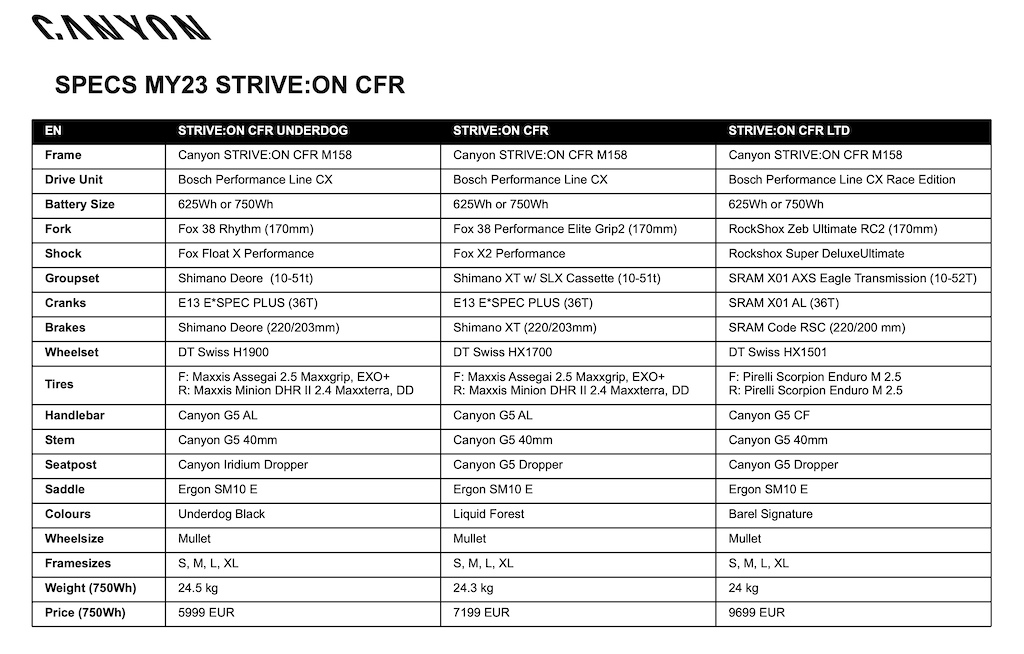
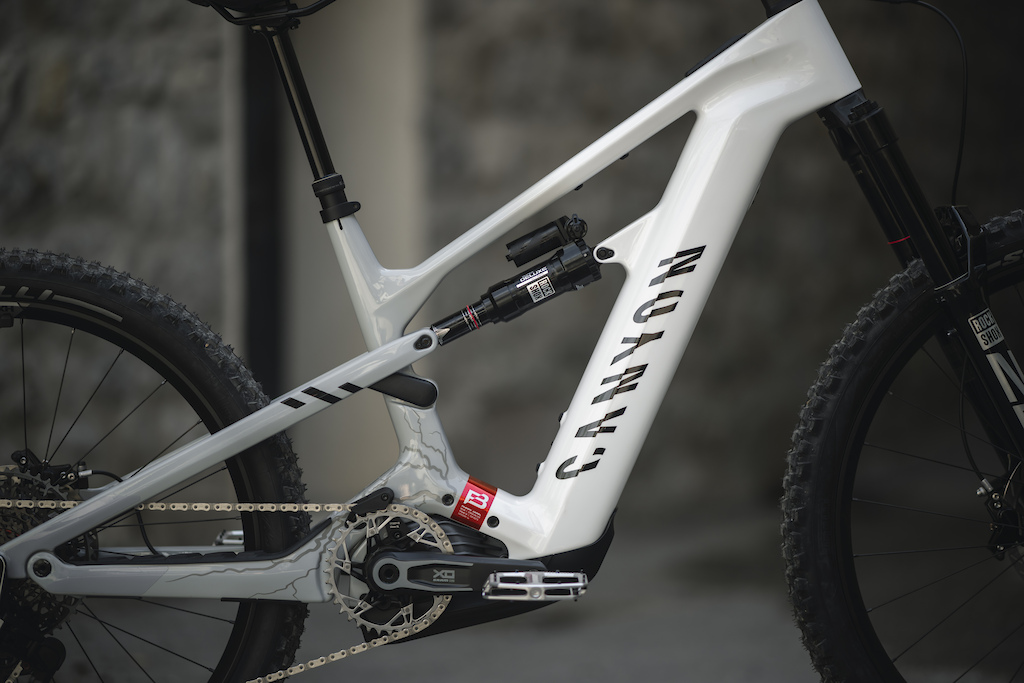
Frame Details
The Strive:On closely follows the non-motorized precedent of the already proven Strive, with some extra provisions thrown in to manage the motor and battery. Kinematically they’re quite similar, as the Strive:On was modeled to perform like the regular Strive in DH mode, with the added benefits of extra system weight and reduced pedal kickback.
Despite the through-headset cable routing, the other frame details are quite well sorted, with a fairly simple layout and easily accessed pivots and service areas. The battery can be quickly exchanged for a fresh charge, or swapped for a larger capacity, should you want it.
There’s plenty of room for a full-size water bottle, and there is a secondary pair of accessory mounts on the underside of the top tube. The design team at Canyon also put a lot of work into the motor packaging, including a nicely designed skid plate that should protect the Bosch unit from any hard hits or sharp kick-ups.
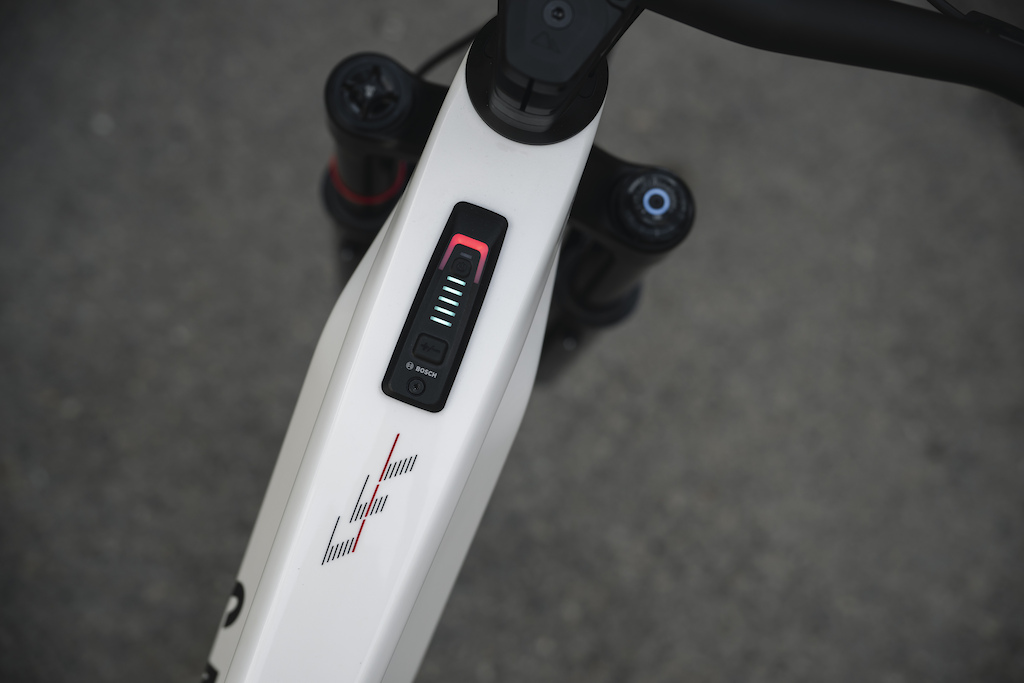
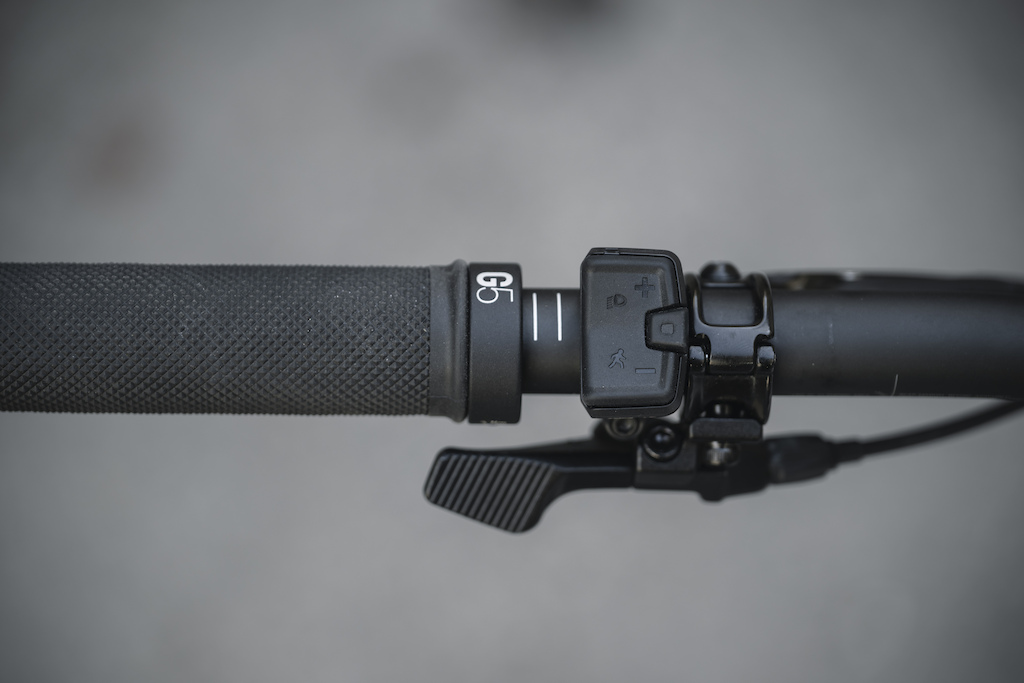

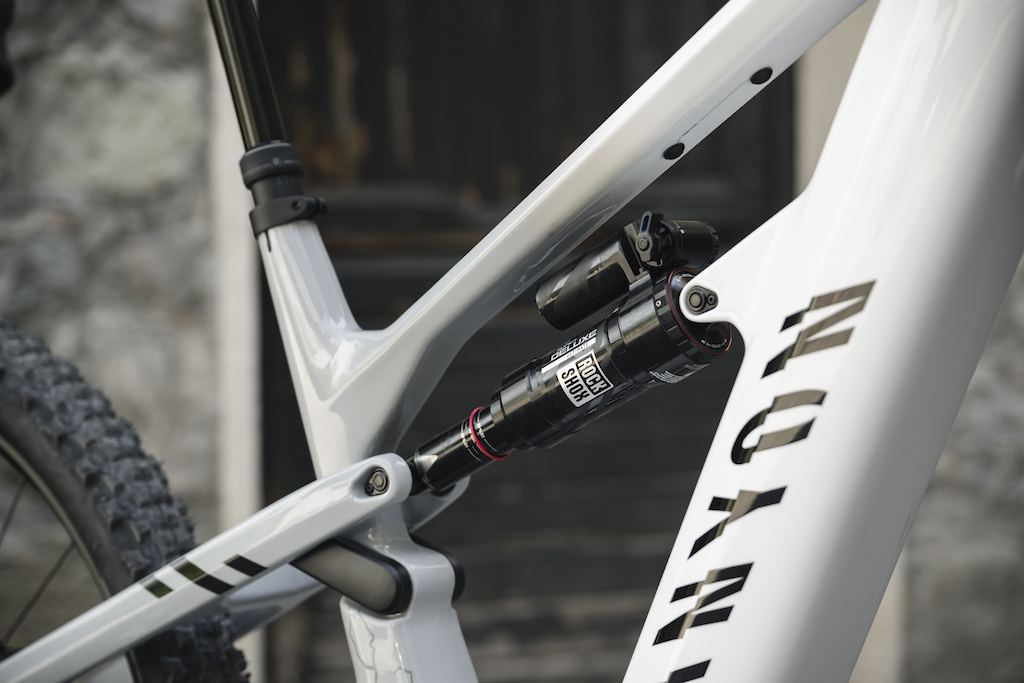
The Bosch controls are the same as existing models, with the easy to live with Bluetooth remote controlling the fairly simple head unit. You can toggle between all four modes easily, using either the two-button remote or the single button on the head unit.
The bikes use Bosch’s own Powertube batteries, but Canyon has redesigned the mounting system to better cater to the shape and function of the specific bike. By doing so, they shaved 300 grams from the chassis, and allows for quicker battery swaps in the field.
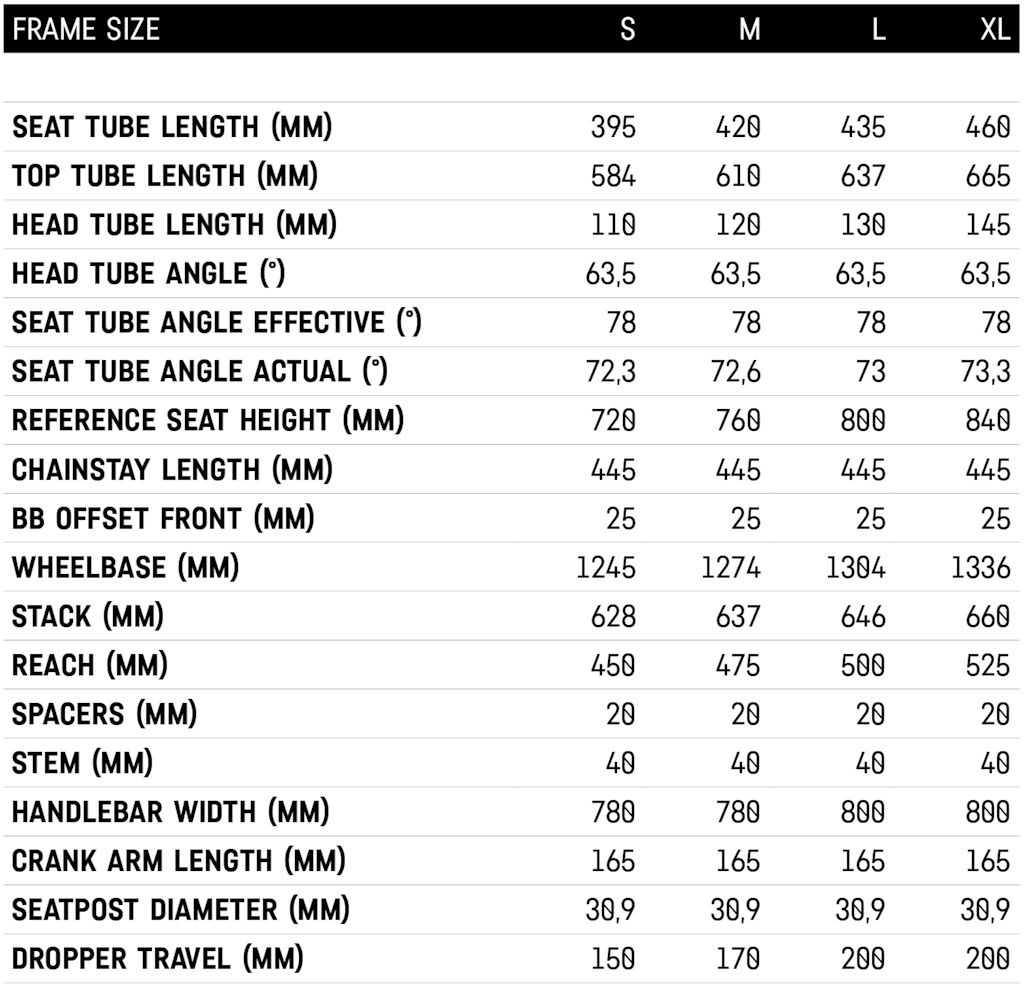
Geometry
The geometry of the Strive:On isn’t too far off from its non-electric counterpart, but with the notable omission of the Strive’s adjustability. There is no Shapeshifter, and no reach adjust at the headset, simply just a bike meant to go downhill fast. Starting from the Strive’s DH position, the Strive:On gets longer chainstays and a steeper seat tube angle to better navigate tech climbing, plus a default shorter reach to try to keep the bike maneuverable.
With four size options, and a reach range from 450 to 525mm, the fit of the Strive:On is definitely biased towards bigger riders. Canyon’s reach numbers are generally pretty aggressive in how long they are per size, but riders looking to size down for more agility might hit the low-end of the range pretty quickly.

Ride Impressions
Though my time aboard the Strive:On has been pretty limited thus far, it didn’t take much for the bike to show just how well-suited it is to covering ground fast. Being that this is a powered bike, it makes sense to start with the motor. I was impressed by how natural the Bosch system felt, despite delivering gobs of power at the rear wheel. We spent a fair bit of time sessioning some absurd tech climbs with the bike, and the motor felt intuitive and controllable, even in weird janky sections. For race applications, there is definitely a benefit to the CX Race’s overrun power surge, where the motor continues to push for a couple meters after you’ve laid off the pedals. For most e-bike riding, however, I don’t think you’d miss that feature all that much.
Looking at the Strive:On as a standard enduro bike, it’s simply a well-sorted machine, with great geometry and handling characteristics. Where the head angle and reach might seem a bit extreme relative to current high-level pedal bikes, the extra system weight makes that long reach and slack front end a bit easier to wrangle. Instead of focusing on weighting the front end, you can instead aim for the right lines and features, knowing the grip will be there. This is generally a bonus to the extra weight of e-bikes in general, but Canyon tuned things quite well on the Strive, enhancing those perks.
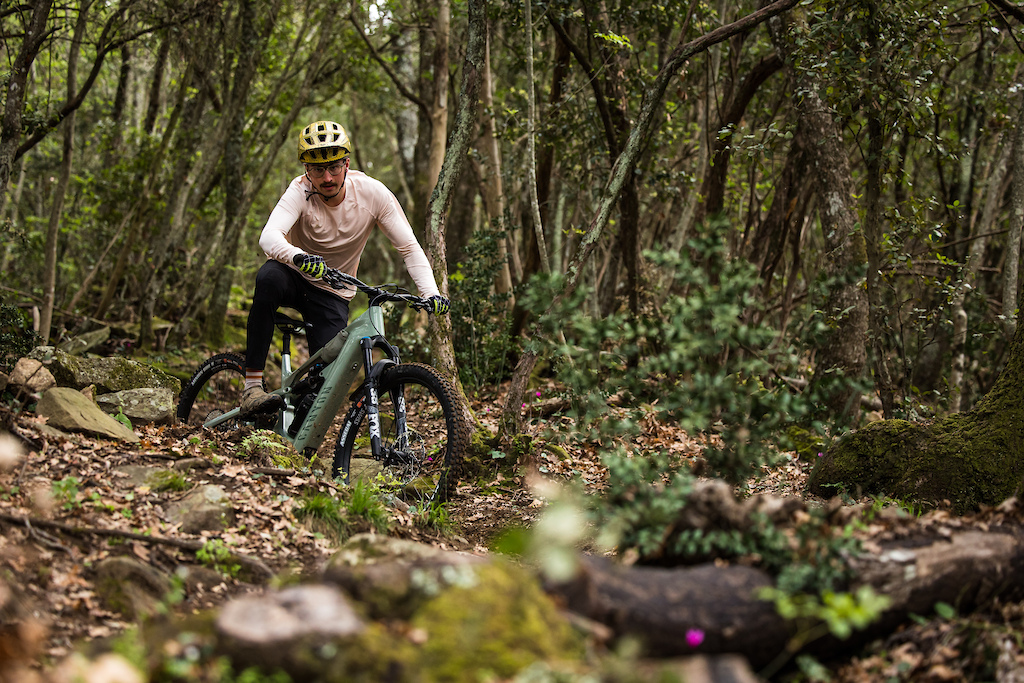
One standout trait of the Strive:On – apparent even when setting up in the parking lot – is just how active the rear end of the bike is. Just hopping the bike around can use almost all of the available travel, but the Canyon team ensured us that would be no issue when on trail. They proved to be correct, as despite some pretty massive g-outs and square hits, the bike never had a noticeable bottom-out. What it did have was excellent grip, and a fairly predictable rear end feel. There seemed to be an issue with the rebound tune on our test bikes, as they were essentially full-fast regardless of where the adjuster sat, but that never felt too sketchy on trail – plus, this should be sorted with production models, as Fox will have a chance to fix things on their end.
Other component notes are all the common spec challenges with e-bikes: tires, brakes, and drivetrain. With an EXO+ front and DoubleDown rear spec, the Strive can feel a bit like going for a run in slippers – it works great until something goes quite wrong. I didn’t have any issues over the brief testing period, though I’d opt to run beefier tires for my daily riding. The Shimano XT brakes had solid bite and were fairly consistent on long runs, but something with a bit more stopping power wouldn’t hurt when you’re pushing on steep terrain. Our test bikes were equipped with Shimano XT drivetrains, and over a very full day of riding two derailleurs fell prey to the extra power of the Bosch motor. You have to be quite careful shifting under power on an e-bike, and some folks found that out the hard way. SRAM’s Transmission or Shimano’s more robust Linkglide single-click drivetrains would make more sense for a bike like this.
All told, the Strive:On proved to be an excellent bike for tackling some impressively gnarly terrain. There are a few tweaks to the spec that I’d make on my personal bike, but as a stock machine it’s quite impressive. The Strive is eager to remind you that you’re on an e-bike on the climbs, but there were plenty of moments on the descents where the extra heft and complication faded away, making for some truly excellent runs.
I’m looking forward to spending more time on the Strive:On as the summer approaches, so stay tuned for more thoughts.

